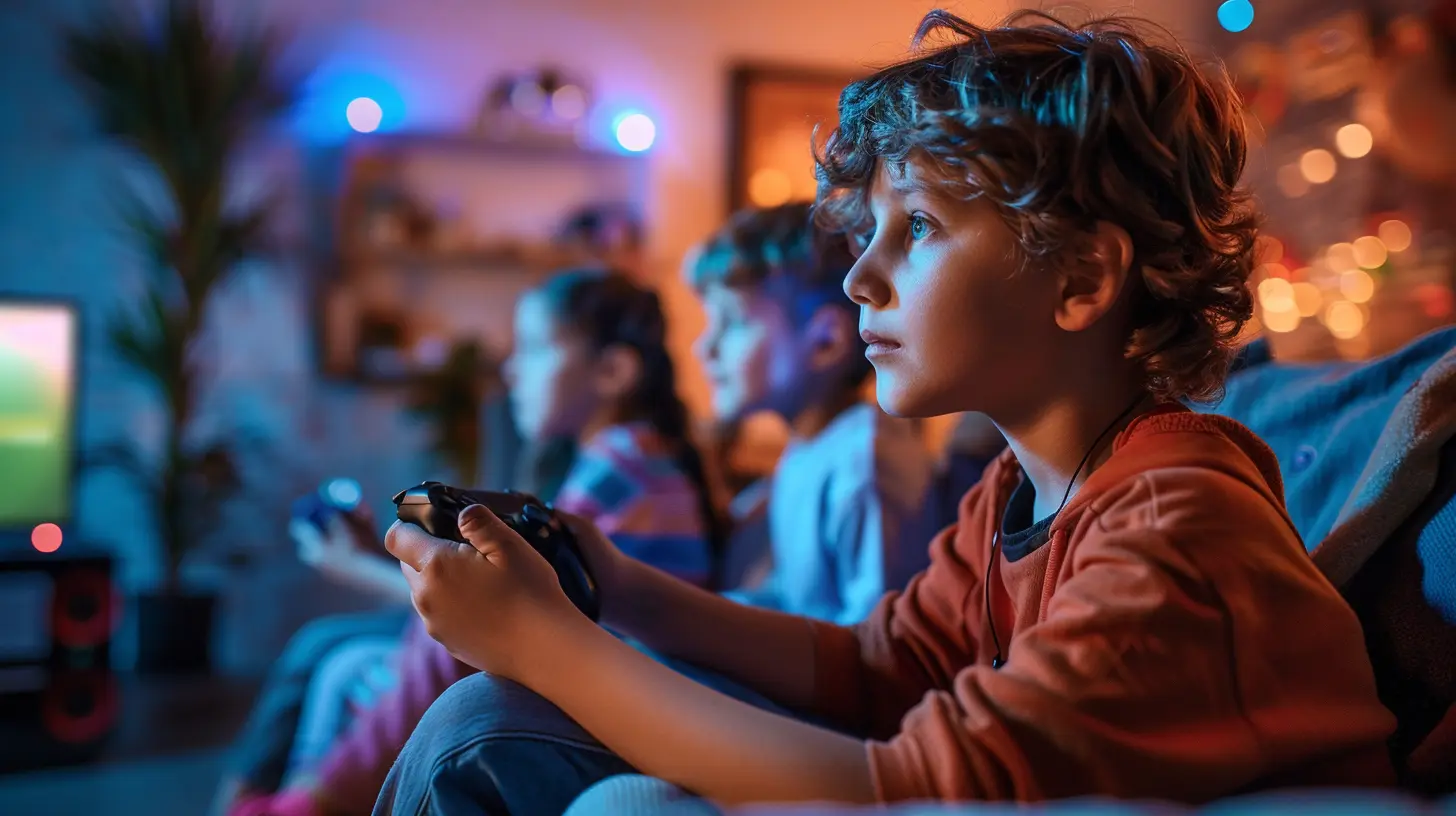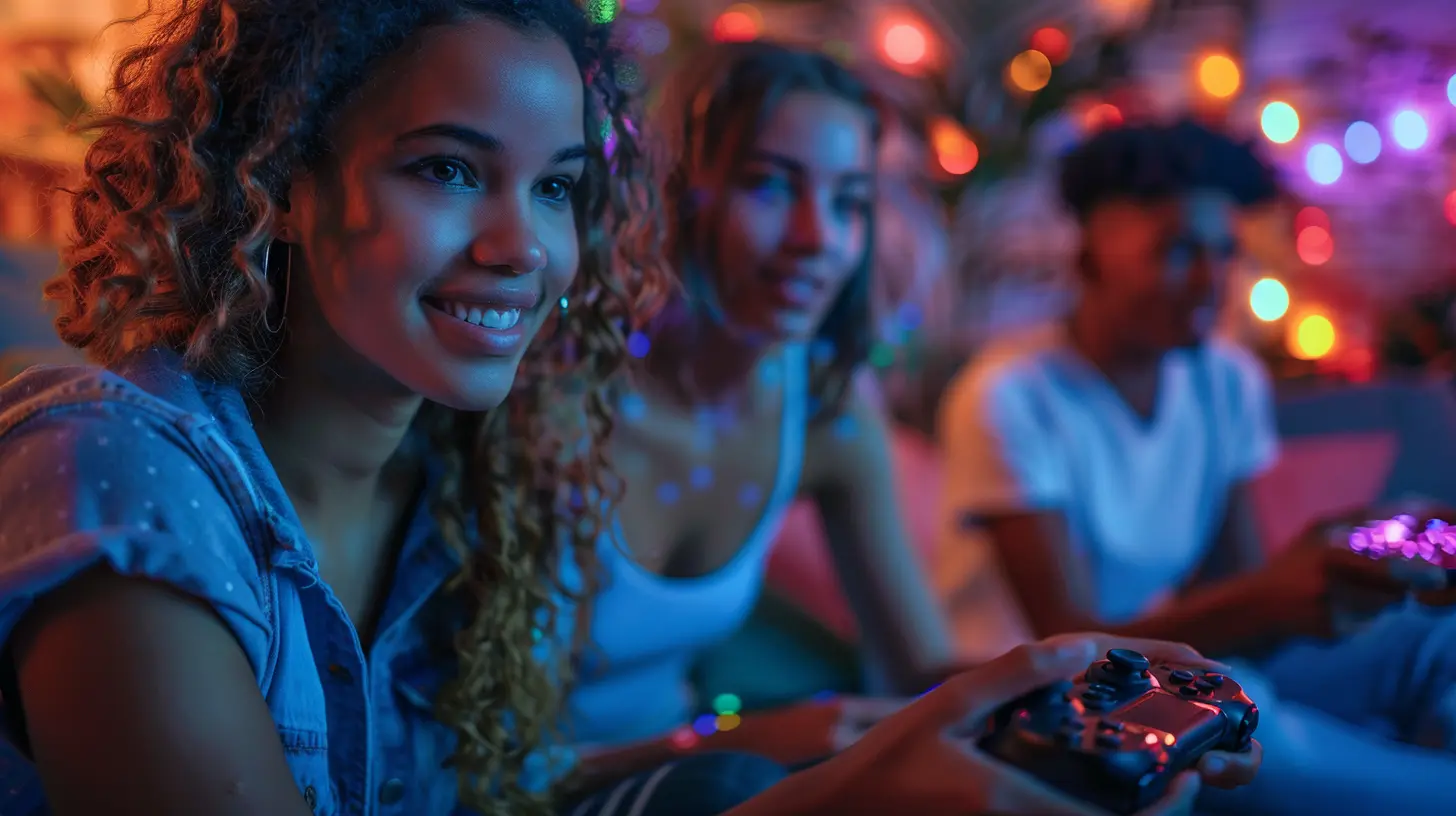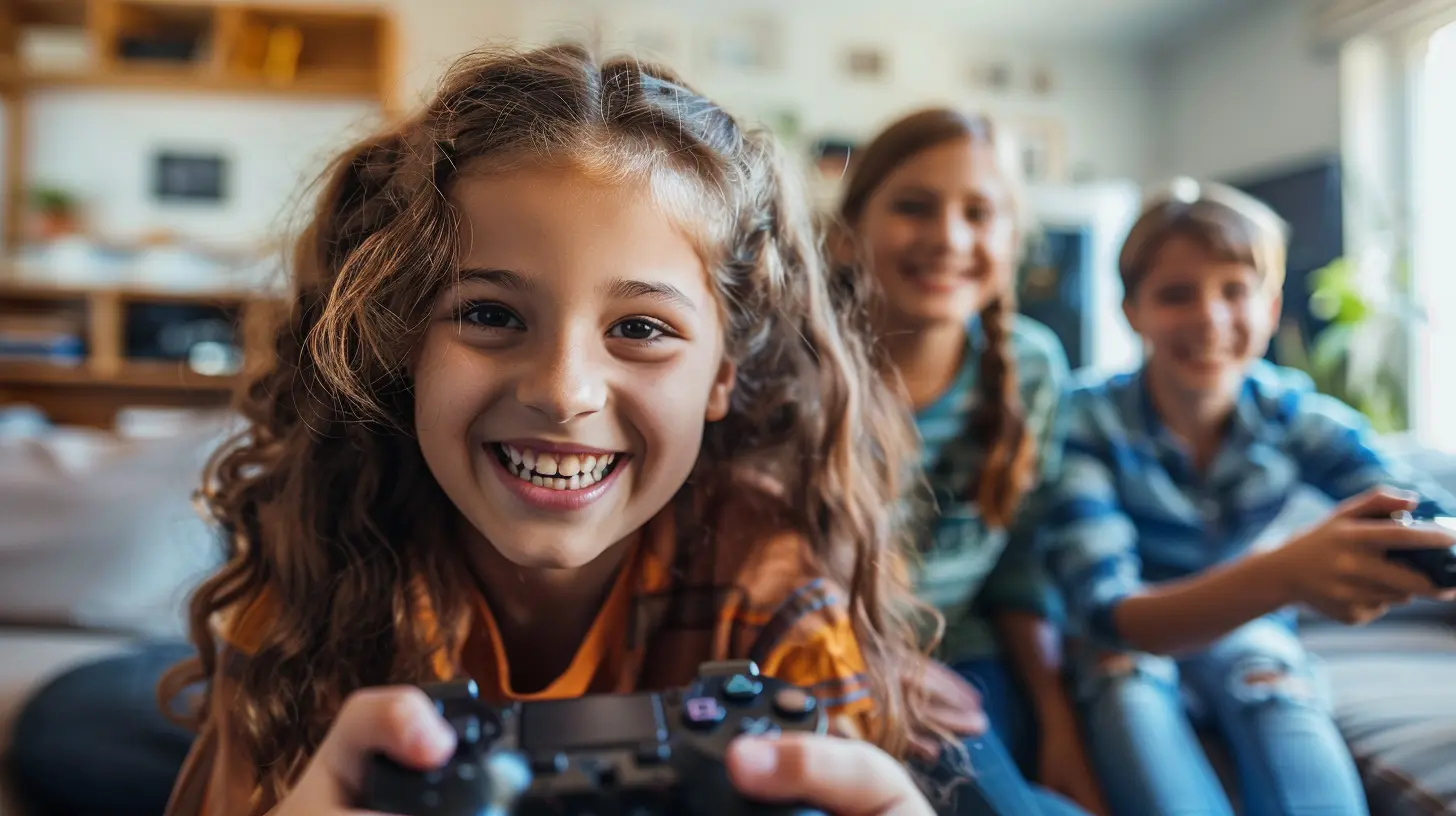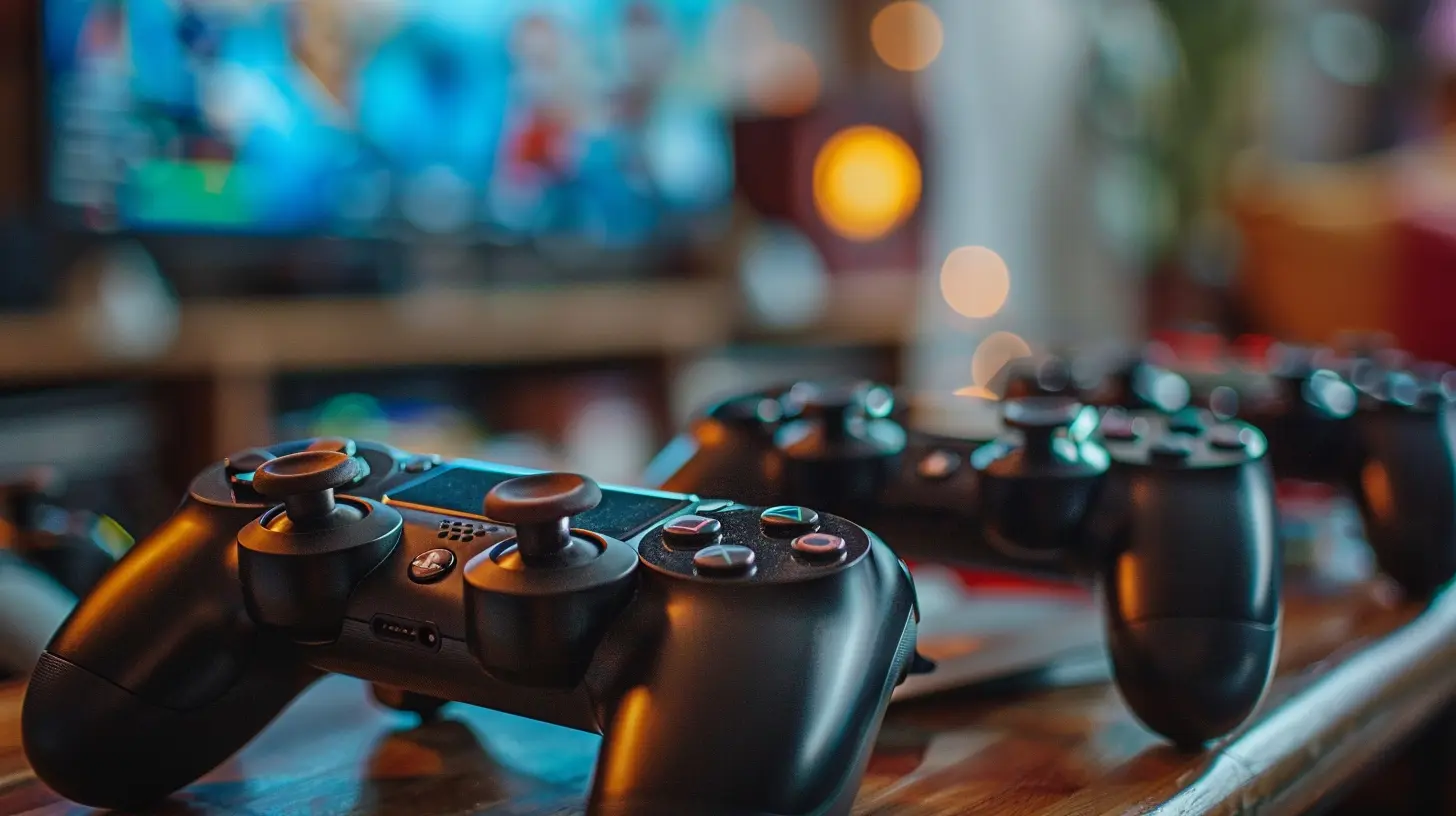Creating Safe Social Spaces Through Gaming
29 August 2025
Video games have come a long way since the pixelated days of Pong and Pac-Man. Today, they're not just about high scores and fancy graphics—they're powerful platforms for connection, creativity, and community. But with all that power comes responsibility. How do we make sure that the virtual worlds we love so much are also safe, inclusive, and welcoming?
Let’s dive into the world of gaming and how it can create safe social spaces where everyone feels like they belong.
Why Safe Spaces in Gaming Matter More Than Ever
Let’s face it—online interactions can be a mixed bag. You've got your wholesome moments, like teaming up with strangers in a raid or sharing a laugh over voice chat. But then there are the darker sides: bullying, harassment, toxicity. Unfortunately, these aren't rare.Now, think about this: games are more than just entertainment. For many, they’re lifelines. They're where friendships bloom, identities are explored, and creativity flows. So when toxicity creeps in, it doesn’t just ruin a game—it shatters a safe space someone might really need.
Creating safe social spaces in gaming isn’t just a nice-to-have; it’s essential.
What Is a "Safe Space" in the Gaming World?
Before going further, let’s break it down.A safe social space in gaming is:
- Inclusive: No one's left out, no matter their gender, race, age, ability, or identity.
- Respectful: People communicate with kindness and empathy—even when the competition is fierce.
- Supportive: Players feel encouraged to be themselves without fear of judgment or harassment.
Imagine a gaming environment that wraps around you like your favorite hoodie—comfortable, warm, and just right. That’s what a safe gaming space feels like.
The Role of Game Developers: Building Safe Tools from the Ground Up
So how exactly do we make these virtual spaces safer?It all starts with the developers.
1. Intentional Game Design
Game mechanics can seriously shape behavior. Think about it—if a game rewards teamwork and collaboration (looking at you, Among Us), players are more likely to cooperate and communicate respectfully.Dev teams can design features such as:
- Positive reinforcement for good behavior (like Overwatch’s endorsement system).
- Accessible reporting tools for toxic players.
- Filters and moderation in chat features.
The idea? Build the foundation first. Create a game that values community over chaos.
2. Moderation & Enforcement
Rules are only as good as their enforcement. Developers need to be upfront about community guidelines—and actually enforce them.Whether it’s banning repeat offenders or offering rehabilitation systems for behavior correction, players need to know there are consequences.
Oh, and automated systems shouldn’t be doing all the heavy lifting. Real human moderation still matters—because sometimes, context makes all the difference.
The Power of Community: Gamers Taking Charge
Developers set the stage, but the real magic? That comes from the players.1. Positive Role Models in the Community
Every community needs its champions. Streamers, guild leaders, forum moderators—people who have a voice and use it responsibly.When influential gamers stand up against toxicity and promote kindness, others follow. It’s like dominoes—one good example can spark a chain reaction.
2. Self-Policing Communities
Ever noticed how some Discord servers just feel nice? That’s usually thanks to active community members who look out for each other.Players creating and enforcing their own community norms—like no hate speech, respect for pronouns, and zero tolerance for harassment—is incredibly powerful.
3. Peer Support Networks
Games like Final Fantasy XIV and Animal Crossing have fostered beautiful ecosystems where players support each other emotionally. From in-game weddings to grief counseling, these spaces go beyond gameplay.It’s a reminder that behind every character avatar is a real person—sometimes a person who really needs a friend.
Streamers and Influencers: Using Platforms for Positivity
Let’s not underestimate the role of content creators.They’ve got huge reach—and with that comes major responsibility. When a streamer shuts down hate in their chat or speaks up about mental health, they’re shaping culture. Big time.
Setting The Tone
Creators can:- Moderate their chats with clear rules.
- Celebrate differences and diversity.
- Partner with charities or awareness campaigns.
By doing this, they create mini safe spaces that ripple outward into the broader gaming world.
Mental Health and Safe Gaming Spaces
Let’s get real for a second—gaming is a damn good escape. When life gets overwhelming, diving into a virtual world can bring relief. But if that space turns toxic, it can end up adding to someone’s struggles.Safe spaces in gaming support mental wellness in many ways:
- Reduced anxiety: When players know they won’t be judged or harassed, they can relax and enjoy the experience.
- Belonging: The feeling that “someone gets me” can be life-changing.
- Support systems: Some players find friend groups in games that become their emotional support crew.
When gaming communities are kind and inclusive, they can literally save lives. No exaggeration.
Gaming and Marginalized Communities: A Space to Be Seen
For many marginalized individuals—LGBTQ+ folks, people of color, women, and disabled gamers—safe online spaces are more than just comfort zones. They're essential.Gaming allows people to:
- Express identities they might not be able to reveal offline.
- Connect with others who share their experiences.
- Escape real-world discrimination, even if just for a little while.
But this only works if the space is truly safe. One racist slur or creepy DM can wreck it all. That’s why advocating for and protecting these safe zones is so important.
Tools and Features that Help Make Games Safer
Let’s get practical for a bit. What actual tools can help?- Block and mute options: These give players control over their space.
- Community guidelines: Clear rules about acceptable behavior.
- Trigger warnings: Especially in games with heavy themes.
- Verified age restrictions: To protect young gamers from inappropriate content.
- Opt-in voice chat and text: So players can decide how much contact they want.
Features like these empower players to customize their experience—like setting your own difficulty level in real life.
Game Genres That Naturally Promote Safe Spaces
Let’s be honest: some game genres just attract better vibes.1. Cozy Games
Think Stardew Valley, The Sims, Animal Crossing. These games focus on creativity, kindness, and connection. No headshots. No trash talk. Just peaceful, feel-good gameplay.2. MMORPGs
Massively Multiplayer Online Role-Playing Games like Final Fantasy XIV have vibrant communities. Sure, they’re not perfect, but many players take pride in creating supportive environments.3. Social Deduction Games
Games like Among Us or Project Winter thrive on communication. When moderated right, they encourage dialogue, trust, and teamwork.Safe spaces tend to blossom in games that reward empathy over ego.
Education and Awareness: Teaching Kindness in Gaming
It’s wild to think about—but we rarely teach people how to be kind online.Incorporating empathy training and digital citizenship into game tutorials or community onboarding could change the game—literally.
Imagine booting up a new game and having a short, interactive lesson on how to give constructive criticism, how to support a teammate, or how to report inappropriate behavior. Powerful, right?
Parents and Guardians—They’ve Got a Role Too
Let’s not forget the parents out there scratching their heads over what their kids are doing online.You don’t need to be a gaming expert—but staying involved matters. Talk to your kids about who they’re chatting with, what kind of behavior they see, and how they feel while playing.
Encourage games and communities that prioritize compassion, not competition. And keep an eye out for signs of distress—sometimes a toxic gaming space can do real emotional damage.
Wrapping It Up: It’s on All of Us
Safe social spaces in gaming don’t create themselves. They’re built, brick by digital brick, by developers, moderators, players, streamers, and even parents.You don’t need to overhaul an entire platform to make a difference. Sometimes it’s as simple as:
- Speaking up against bullying.
- Complimenting a teammate’s skill.
- Being inclusive in your group invites.
- Supporting games and creators that promote positivity.
Gaming has the power to unite, heal, and inspire. Let’s make sure it lives up to that potential—and becomes the kind of space we’re proud to log into every day.
all images in this post were generated using AI tools
Category:
Games And Social SkillsAuthor:

Aurora Sharpe
Discussion
rate this article
1 comments
Anisa Cole
Gaming: where high scores and safe spaces level up together!
September 14, 2025 at 2:56 AM

Aurora Sharpe
Absolutely! Gaming fosters community and inclusivity while encouraging healthy competition. It's a perfect blend for both fun and connection.


